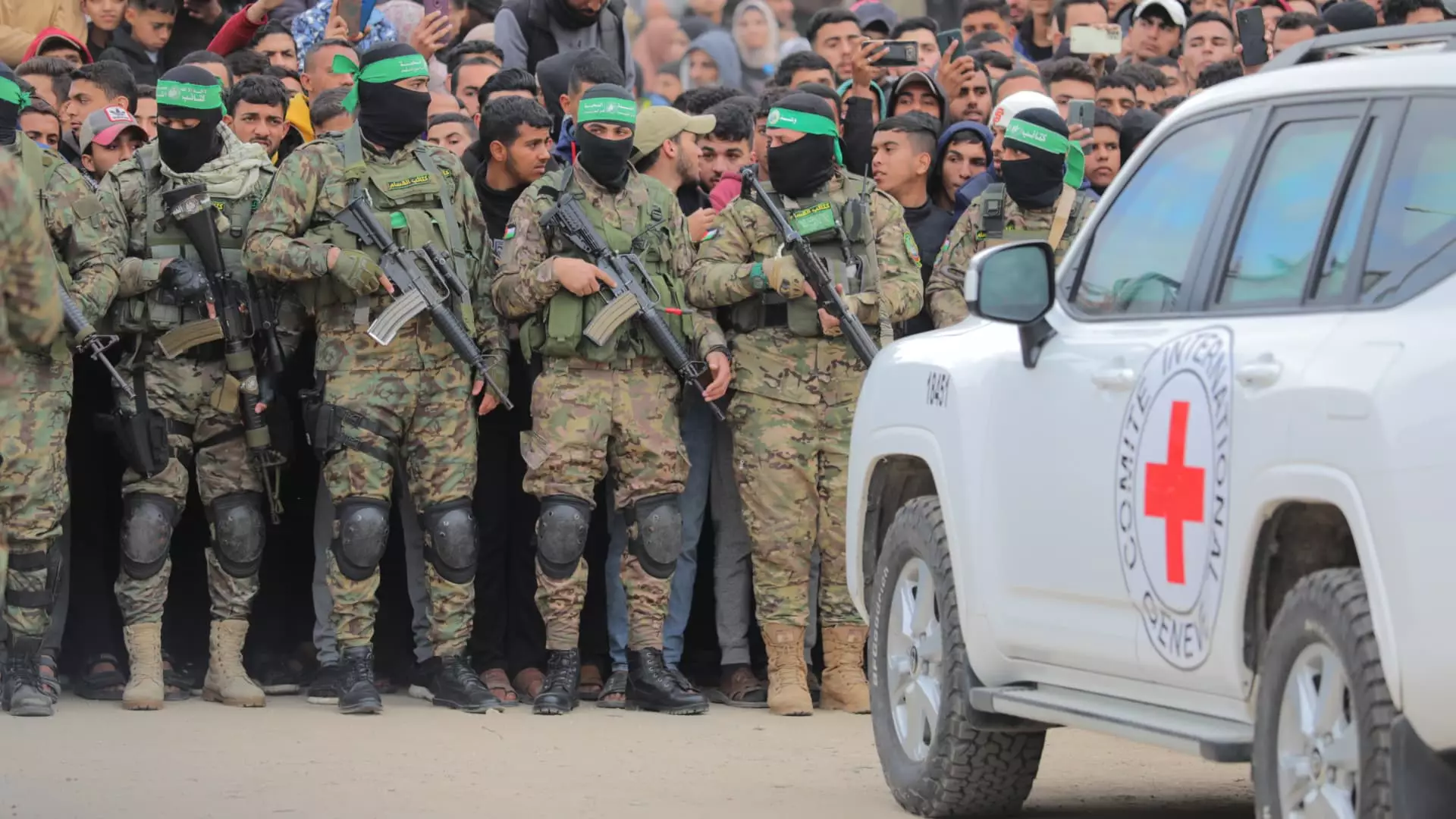In a harrowing event that reverberated throughout Israeli society, the Palestinian militant group Hamas facilitated the release of three Israeli hostages on a Saturday marked by both relief and devastation. The agonizing images of the hostages—Ohad Ben Ami, Eli Sharabi, and Or Levy—markedly altered public perception and prompted emotional responses across the nation. The hostages, whose frail and emaciated bodies were shown during a Hamas-led handover, starkly reminded everyone of the physical and psychological toll of prolonged captivity. These vivid images, shared with the world over live television, spoke volumes about the conditions the hostages endured during 15 months of war in Gaza.
Presented on a podium in Deir al-Balah, flanked by armed militants, the three men seemed almost unrecognizable to their friends and families. Michal Cohen, the mother-in-law of Ohad Ben Ami, encapsulated the sentiment of horror many Israelis felt as she noted, “He looked like a skeleton.” This poignant remark serves as a reminder of the trauma inflicted not just on the hostages but on their families, who watch their loved ones return in an altered state, both physically and emotionally. As the families reunite, the contrasting realities of loss and survival emerge even more starkly—Sharabi, a father, returned home bearing the weight of the deaths of his two teenage daughters and wife, tragically killed during the initial attack that saw their lives uprooted.
A Complex Exchange: Trade-offs and Political Maneuvering
The release of the hostages came as part of a broader ceasefire agreement that entails significant consequences for both sides involved. As Hamas handed over three hostages, Israel agreed to release 183 Palestinian prisoners, many of whom had faced serious charges, including involvement in fatal attacks. This exchange represents a calculated negotiation strategy that reflects both the desperation for peace and the complexities of the longstanding conflict. The reach of U.S. involvement, alongside mediation from Egypt and Qatar, highlights the international dimensions of the crisis, painting a nuanced picture of diplomacy in a region often afflicted by strife.
The backdrop of casualties is staggering—claims suggest that around 1,200 people were killed in the initial Hamas attack, leading to a brutal Israeli counter-offensive that has resulted in the deaths of over 47,000 Palestinians. The cycle of violence underscores a profound dilemma; the quest for justice often breeds more suffering. In this light, the discussions surrounding the hostage exchange expose the bitter trade-offs that families must endure for the sake of broader goals. Each released hostage and each freed prisoner tells a distinct story interwoven with grief, loss, and fleeting moments of hope.
Future Implications: Tensions Amid Tempting Promises
As negotiations for further hostage releases continue, the potential for future exchanges tantalizes families and surfaces fears that the truce might collapse. Recent comments from U.S. President Donald Trump concerning the future of Gaza have also stirred controversy and fear, as proposals deemed threatening to Palestinian autonomy have yet to settle well with regional stakeholders. Many view these measures as harbingers of greater turmoil rather than stability, raising alarms over the possibility of acts deemed as ethnic cleansing.
Furthermore, the direction of Israeli military operations remains uncertain, as Prime Minister Benjamin Netanyahu’s government grapples with plans to allow voluntary evacuations of Palestinians from Gaza. The ceasefire, characterized as delicate, serves as a temporary respite amid the backdrop of chaos and hostility. As families await the return of more hostages, the humanitarian toll and loss of life become poignant reminders of why lasting peace remains elusive.
The anticipated release of 33 Israeli individuals—many women, children, and those with health concerns—indicates a precarious foundation for future negotiations to thrive. As the world watches, the complexities of the Israeli-Palestinian conflict continue to unfold in deeply human and tragic ways, challenging all notions of what it means to achieve peace in a war-torn land.
The recent hostage release highlights a bittersweet milestone within a longstanding conflict characterized by pain and loss; it also underscores the broader geopolitical stakes at play. The hope for peace remains intertwined with the painful realities of human suffering, making every step forward both a victory and a reminder of the obstacles that lie ahead.



Leave a Reply